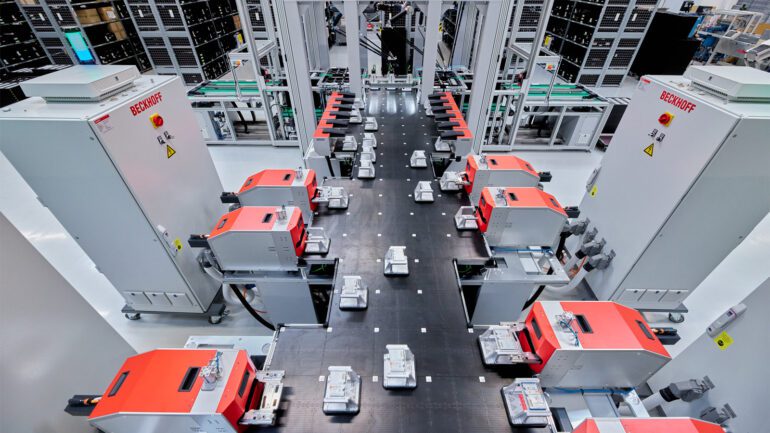TL;DR:
- Beckhoff showcased the TwinCAT Chat Client at Automate 2023, which leverages LLM AI technology.
- The Chat Client automates tasks like function block code creation, optimization, and documentation.
- It connects to the host cloud of the LLM, such as OpenAI’s ChatGPT via Microsoft Azure.
- The software provides step-by-step instructions for programming and generates code within seconds.
- Users should review the code before implementation to ensure accuracy.
- The TwinCAT Chat Client accelerates code programming, making it more efficient and streamlined.
Main AI News:
Since the public release of large language models (LLMs) like ChatGPT, the industrial manufacturing sector has been actively exploring their potential applications. While initial experimentation focused on improving interactions with existing software, the industry is now witnessing the introduction of new products that harness the capabilities of LLMs.
During Automate 2023, Beckhoff provided a glimpse of its upcoming innovation, the TwinCAT Chat Client. This groundbreaking tool is specifically designed to streamline automation tasks such as function block code creation, additions, optimization, documentation, and restructuring.
Integrated within TwinCAT XAE (extended automation engineering), the Chat Client connects seamlessly with the LLM’s host cloud. For instance, if Microsoft Azure is being utilized, the Chat Client establishes a connection with OpenAI’s ChatGPT. Beckhoff has meticulously tailored TwinCAT Chat Client to align with TwinCAT’s unique requirements, optimizing LLM functionality for unparalleled performance.
At Automate, Daymon Thompson, Beckhoff’s director of product management, conducted a demonstration showcasing the application of this technology in programming a conveyor system. Thompson elucidated how the software guides users through the step-by-step process, ensuring all necessary variable inputs are provided for the LLM to generate code. Once the variables are entered, a simple selection of “autocomplete” triggers the transmission of the variable data to the ChatGPT engine, which promptly returns the completed code, typically within a few seconds.
While LLMs exhibit exceptional precision in code development, Thompson emphasized the importance of thoroughly reviewing the generated code before implementation. He highlighted that if users are satisfied with the results, they can effortlessly integrate the program icon by dragging and dropping it into the TwinCAT program, swiftly creating a comprehensive system for operating the conveyor.
Thompson expressed his enthusiasm about the TwinCAT Chat Client’s potential, stating that it significantly accelerates and streamlines the code programming process. Beckhoff eagerly anticipates future possibilities as they continue to expand and enhance this innovative solution within their engineering environment.
Conclusion:
Beckhoff’s introduction of the TwinCAT Chat Client, incorporating LLM AI integration, marks a significant advancement in the industrial automation market. This innovative solution streamlines and accelerates code programming, reducing manual effort and enhancing efficiency. By automating tasks like code creation, optimization, and documentation, Beckhoff empowers manufacturers to achieve higher levels of productivity and operational excellence. The integration of LLM AI technology in TwinCAT signifies a positive trend toward intelligent automation, enabling businesses to optimize their engineering environments and unlock new opportunities for growth and innovation.

